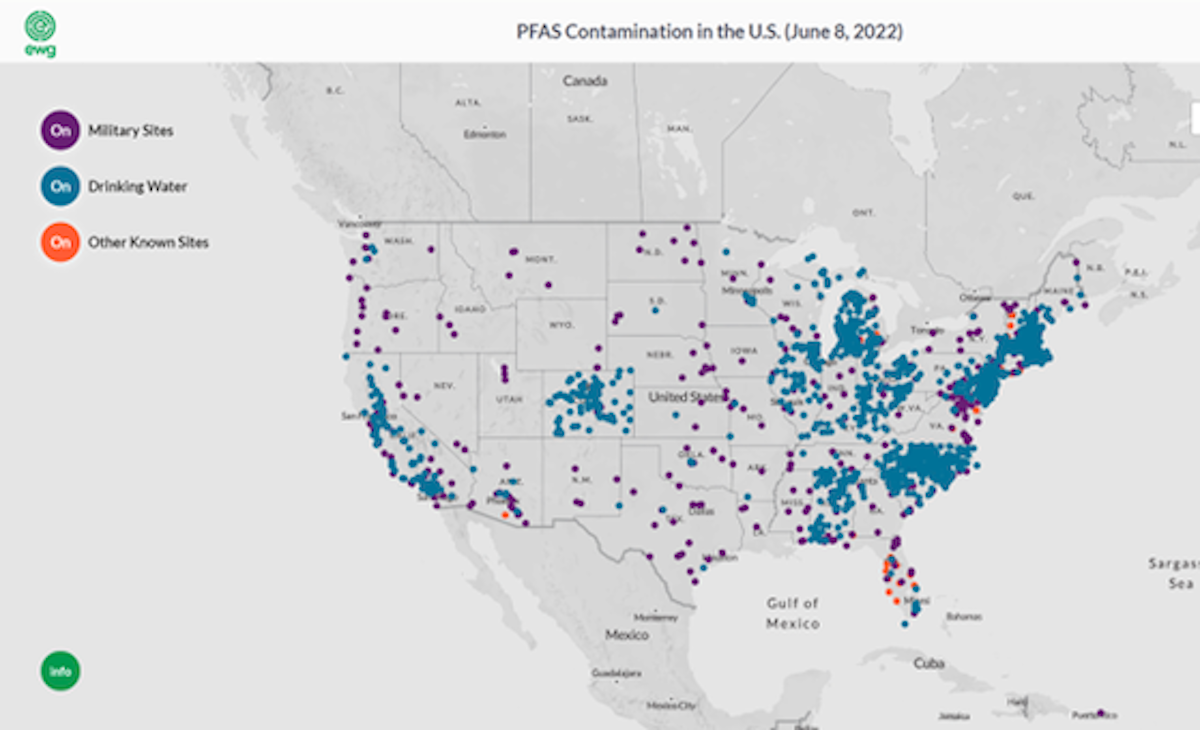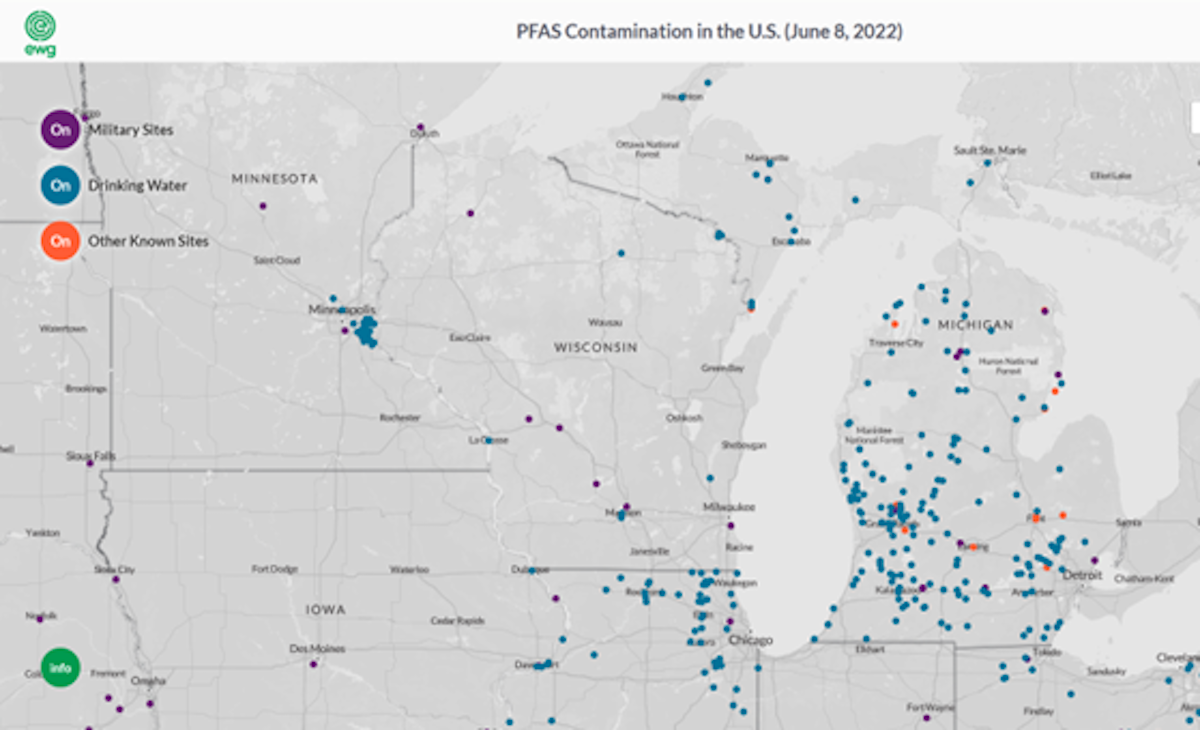Cleaning up PFAS in Wisconsin: What steps are needed
Earlier this year, the Wisconsin Natural Resources Board (NRB) approved state drinking water standards for perfluorooctanoic acid (PFOA) and perflourooctane sulfonate (PFOS) — the two most common chemicals known as per- and polyfluoroalkyl substances (PFAS). The state NRB standards precede federal PFAS standards the U.S. Environmental Protection Agency (EPA) will release next year.
Discussions continue among elected officials, environmental groups, water associations, industries and residents — all with competing views on regulating the chemicals in water and at what levels. As PFAS standards continue to evolve in Wisconsin, so will testing requirements for drinking water, surface water and wastewater.
PFAS limits in Wisconsin
Below, we describe state-approved PFAS limits and give an overview of cleaning up these harmful chemicals. Finally, we remind municipalities and developers to partner with an environmental expert when planning to remediate PFAS-contaminated water.
In Wisconsin, PFAS has been detected in drinking and surface waters near industrial sources, manufacturing use sites and spill locations. State authorities have revised PFAS standards to implement throughout Wisconsin later this year.
- PFAS limits for groundwater: The state NRB rejected recommended PFAS limits of 20 parts per trillion in groundwater.
- PFAS limits for drinking water: The board approved a drinking water standard — mirroring a 2016 U.S. EPA advisory — of 70 parts per trillion for PFOA and PFOS in municipal systems. EPA health advisory levels released this June limit PFOS to 0.02 parts per trillion and PFOA to 0.004 parts per trillion — making federal standards thousands of times lower than Wisconsin's approved PFAS limits.
- PFAS limits for surface water: The Wisconsin NRB approved a preventive PFOS limit of 8 parts per trillion in all surface waters — except for ecologies that provide fish with natural habitats and have no downstream waters containing fish.
- PFAS limits for public water supplies: In sources regarded as public water supplies, the Wisconsin Department of Natural Resources (DNR) recommends a PFOA standard of 20 parts per trillion. For all other surface waters, the state standard is 95 parts per trillion.
These standards are critical to protecting public and environmental health from the harmful effects of PFAS in Wisconsin. They represent a significant step forward to ensure all Wisconsinites have access to safe drinking and potable water.
Cleaning up PFAS in Wisconsin: An overview
As a precursor to PFAS remediation in drinking water, sampling at community water systems would start once the revised state standards go into effect. Sampling requirements for drinking water will be implemented in phases based on the population a water system serves.
- Testing at the largest drinking water systems — serving 50,000 people or more — could start as early as November this year.
- Systems serving between 10,000 to 49,999 residents would start testing three months later.
- Sampling at public water supplies serving fewer than 10,000 people would start three months after stage 2, or ten months after the standards are implemented.
If community water systems detect PFAS contamination, initial testing would happen quarterly. The DNR waives quarterly sampling when no traces of PFAS remain. Monitoring PFAS at these systems can then be reduced to every three or six years. If PFAS levels beyond standard limits are detected, water systems will be required to conduct more frequent testing.
Part of PFAS remediation may require water systems to abandon wells and drill new ones. If detected PFAS chemical levels require treatment, water systems must implement appropriate treatment methods immediately and notify customers about identified PFAS chemicals.
Further DNR requirements include testing discharges from wastewater treatment plants and industrial facilities to ensure they adhere to PFAS surface water standards. If cases exceed PFAS standards, the DNR will work with treatment plants to reduce PFAS levels in their effluents.
Municipalities benefit from the expertise of water and wastewater engineers who can devise monitoring and treatment methods to comply with PFAS standards in drinking water, surface water and wastewater.
Partnering with water and wastewater engineers for PFAS removal
At Fehr Graham, we understand the challenges water and wastewater systems and communities face to comply with PFAS limits and install effective PFAS remediation methods within budget. Our experienced team of water and wastewater engineers has completed some challenging and unique projects across the U.S. and helped communities devise cutting-edge and cost-effective treatment solutions. If you need to investigate or remediate PFAS contamination, we can help you successfully navigate the process.
To learn more about how Fehr Graham can help you clean up PFAS in Wisconsin, contact us or give us a call at 608.329.6400.
 |
Jennifer Buholzer, PE, is a Project Engineer who works on everything from water and wastewater projects to transportation and park projects. She develops relationships with our clients to help them find the most affordable and sustainable solutions. Jen is knowledgeable, results-driven and enthusiastic, offering trainings and webinars and serving as a conference speaker at dozens of events annually. Contact her at |
Collaborative, Insightful, Results-Driven Solutions
Fehr Graham provides innovative engineering and environmental solutions to help improve the lives and communities of our customers.


